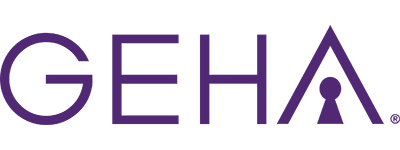Did you know that xylazine is most frequently reported in combinations with two or more substances? While xylazine can be used on its own, it’s more likely to be found in illicit opioids, often without the person’s knowledge.
Xylazine is a sedative, pain reliever, and muscle relaxant that is only approved for veterinary use. It is not approved for human use because of the concerning effects it can cause, including sedation, unconsciousness, and central nervous system depression. However, this substance is increasingly added to “street drugs,” and many people are unaware that they are even consuming the sedative.
Over 3,500 people have died from xylazine overdoses since 2018, but this substance is rarely found alone. In fact, in 99.1% of these deaths, fentanyl was also involved. The combination of both substances is especially concerning, as they both suppress the central nervous system, leading to heavy sedation and slow or shallow breathing. Knowing how to recognize the signs of xylazine overdose is key.
Wolf Creek Recovery is aware of the dangers of xylazine, its frequent combination with fentanyl, and its risk of overdose. Anyone who uses illicit substances is at risk of coming into contact with this substance. This is why it’s important to follow harm reduction practices (e.g., xylazine test strips, never using alone) and being aware of the signs and symptoms of a potential overdose.
Xylazine Overdose
Veterinarians rely on xylazine to sedate animals prior to handling them or performing procedures. For animals, xylazine is safe and effective. However, this is not the case for humans. Xyalzine can make people drowsy and cause blood pressure, heart rate, and breathing to plummet. Unfortunately, xylazine is being increasingly added to illicit opioids to make them cheaper and stronger. This puts people at risk for overdose, especially because they rarely know they’ve taken the substance. Educating yourself on xylazine overdose may very well allow you to save a life one day.
How Can I Recognize a Xylazine Overdose?
A xylazine overdose is a medical emergency that happens when a person takes a toxic amount of xylazine. When mixed with opioids like fentanyl, overdose is even more likely to occur. What makes a xylazine overdose especially concerning is that there is no antidote to reverse the substance’s effects. Therefore, even if fentanyl is involved in the overdose, naloxone may not fully work. Nevertheless, it’s still recommended to administer naloxone and call 911 to reduce the risk of life-threatening symptoms.
Early Warning Signs of Xylazine Poisoning
When you know what to look for, you can identify some of the early warning signs that can appear before a full overdose occurs. Early action matters because xylazine intensifies opioid effects, increasing the risk of overdose. Without naloxone as a full antidote, medical intervention is crucial. Additionally, skin damage can start even before an overdose occurs. Seeking medical attention early can prevent severe complications. Let’s look closer at the signs and symptoms of a potential xylazine overdose.
Signs and Symptoms of Xylazine Overdose
The early signs and symptoms of xylazine overdose are often physical and mental in nature and include extreme drowsiness, slurred speech or confusion, muscle weakness, slow breathing, small, pinpoint pupils, and pale or bluish skin/lips. Other possible symptoms include low blood pressure, slow heart rate, cold or clammy skin, and nausea or vomiting. It’s also possible to develop skin ulcers and sores, particularly in individuals who inject xylazine. These wounds are often slow to heal, putting people at risk for infections or necrosis.
What Specific Dangers Can Occur?
People who use xylazine face unique risks due to the unpredictable nature of this substance and the fact that it is not approved for human use. The main danger of xylazine overdose is severe respiratory depression. When breathing slows to dangerously low levels, there is a lack of oxygen to the brain, heart, and organs. Without intervention, respiratory and cardiac arrest can occur. The risk goes up tremendously when opioids are present, which is often the case.
Additional dangers of xylazine overdose include extreme sedation and unconsciousness, significant drop in blood pressure and heart rate, and skin ulcers and tissue damage that can lead to serious infections. It’s also important to note that xylazine overdoses are difficult to treat because there is no way to reverse their effects. The best way to avoid these dangers is to recognize the early warning signs of xylazine overdose and seek immediate medical intervention.
How to Respond to a Xylazine Overdose
If you believe that someone is overdosing on xylazine, it’s important to act quickly. You should also assume that the person is also overdosing on fentanyl, as xylazine and fentanyl are often combined together. This allows you to take the most precautions and give the person the best chance at surviving the overdose.
Start by calling emergency services right away. If the person is unconscious but breathing, place them on their side in the recovery position. If breathing is stopped, begin CPR, if you are trained. Administer naloxone (if available), which will help if opioids are present in the person’s system. Keep the person warm and monitor vital signs until help arrives. Once emergency services take over, they’ll provide breathing and cardiovascular support.
Are Certain People More at Risk?
Anyone who takes too much xylazine can experience an overdose. However, this scenario is more likely to occur in certain individuals. For instance, those who use illicit opioids are at the greatest risk because xylazine is increasingly mixed with heroin, fentanyl, and other opioids, often without the person’s knowledge. To decrease this risk, it’s best to test the supply using xylazine test strips.
Individuals who have developed opioid tolerance are also at an increased risk of xylazine overdose because they tend to use opioids in higher amounts, potentially consuming larger doses of xylazine. Additional risk factors include using illicit substances alone, having pre-existing respiratory or cardiovascular conditions, and living on the street where access to harm reduction services may be limited.
Individual and Systemic Risk Factors
Risk factors for xylazine overdose include both individual and systemic risk factors.
Individual risk factors:
- Having opioid use disorder or using opioids regularly
- Lack of awareness about xylazine being in the drug supply
- History of overdoses (indicates higher-risk use patterns)
- Using alone without someone there to respond to an overdose
- Mixing substances (particularly CNS depressants with alcohol or benzos)
- Having reduced tolerance after a period of abstinence
- Pre-existing health conditions
Environmental risk factors:
- Living in an area where “tranq” is prevalent
- Limited access to services that check for xylazine
- Unstable housing or homelessness
Comprehensive Treatment for Xylazine in Prescott, AZ
If you or someone you care about is dependent on xylazine, it’s important to know that xylazine addiction treatment is effective. Keep in mind that many people who are dependent on xylazine are also dependent on opioids like fentanyl, making comprehensive care a necessity.
The treatment process starts with a withdrawal period where xylazine is removed from the body. Medical supervision is crucial to manage withdrawal symptoms and keep you safe. However, detox alone is not enough to treat xylazine use disorder. You will also need longer term treatment to address the psychological and social components of your substance use.
Expect to participate in behavioral therapies and counseling, peer support groups, and healthy activities like art, music, or outdoor recreation. Medications may also be prescribed to treat opioid use. You may also require attention from wound specialists, as well as harm reduction education and resources to keep you safe until you are fully recovered.
Wolf Creek Recovery is one of the most trusted treatment centers for substance use disorders. We stay on top of the latest trends so that we can get ahead of rising issues and offer people the help they need to get better. Our team has experience treating all types of substance use disorders, and many staff members are in recovery themselves. Our outdoor therapy program also gets clients outdoors so that they can develop life skills, enjoy fresh air and sun, and strengthen their interpersonal skills. To learn more about our recovery programs, contact us today at 833-732-8202. Build a life you love.
FAQs About Xylazine Overdose
What is a xylazine overdose?
Xylazine overdose occurs when a person takes more xylazine than the body can handle. This medication is only approved for veterinary use because of the effects it has on the central nervous system.
How is a xylazine overdose most likely to occur?
Xylazine can be used on its own, but it’s most likely to be consumed in combination with illicit opioids like heroin or fentanyl. People who use these substances, especially in larger amounts, are at a higher risk of overdose.
Who is most at risk of experiencing xylazine overdose?
The people who are most at risk of xylazine overdose are those who use illicit opioids. Because these substances are often contaminated to make them stronger and cheaper, people can be unknowingly exposed to xylazine.
Is there a way to reverse the effects of xylazine poisoning?
No, there is no specific antidote that reverses the effects of xylazine. However, recognizing the early warning signs of an overdose allows first responders to provide critical medical intervention, such as respiratory and cardiac support.











